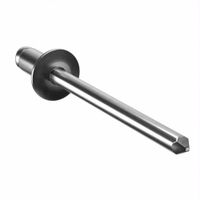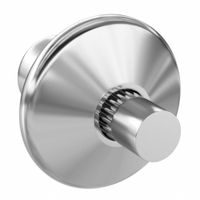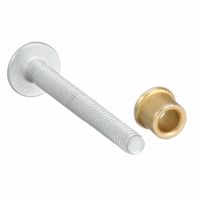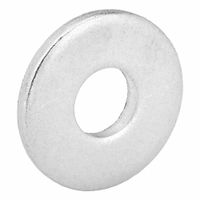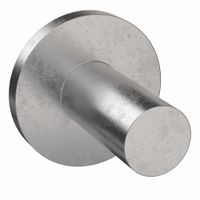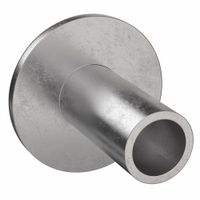Call +(254) 703 030 000 / 751 483 999 / 721 704 777
.....Read More
Frequently Asked Questions
What are the different types of rivets?
Rivets are permanent mechanical fasteners that consist of a smooth cylindrical shaft with a head on one end. The other end is deformed, or "bucked," after insertion to create a new head, securing the rivet in place. Different types of rivets are designed for specific applications, offering varying strengths, materials, and installation methods.
Common types include: * Solid Rivets: These are the oldest and most reliable type, consisting of a solid shaft and head. They are commonly used in critical applications like aircraft structures due to their high strength and resistance to vibration. Installation requires access to both sides of the material.
* Blind (Pop) Rivets: Designed for situations where access is only available from one side of the workpiece. They have a mandrel that is pulled through the rivet body, causing the blind end to expand and form a secure joint. They are popular for lighter-duty applications, such as construction and automotive repairs.
* Tubular Rivets: Similar to solid rivets but with a hole in the shaft, making them lighter and requiring less force to install. They are often used in applications where weight is a concern or where a softer material needs to be joined.
* Split (Bifurcated) Rivets: These have a split end that spreads apart during installation, creating a secure hold. They are commonly used for joining softer materials like leather, plastic, or fabric.
* Drive Rivets: These have a pre-formed head and a ribbed pin that is driven into the rivet body, expanding it and creating a secure connection. They are typically used for fastening thin materials to thicker ones, such as nameplates or decorative trim.
* Flush Rivets: Designed to sit flush with the surface of the material, providing an aerodynamic or aesthetic finish. They are frequently used in aerospace applications to reduce drag.The choice of rivet type depends on factors such as the materials being joined, the strength requirements, access limitations during installation, and environmental conditions.
How do blind rivets work?
Blind rivets are a type of mechanical fastener used to join two or more materials together when access to both sides of the joint is limited. They consist of two main parts: the rivet body, which has a head and a hollow shank, and the mandrel, a long pin with a pre-formed head at one end.
To install a blind rivet, a hole is drilled through the materials to be joined. The rivet is then inserted into the hole from one side, with the rivet body passing through the materials and the mandrel extending out from the opposite side. A specialized tool, called a rivet gun or riveter, is used to pull the mandrel.
As the mandrel is pulled, its pre-formed head is drawn into the hollow rivet body. This action causes the rivet body to expand and deform, creating a "blind head" on the inaccessible side of the joint. The expansion of the rivet body secures the materials tightly together. Once the blind head is fully formed, the mandrel reaches a point of designed weakness and snaps off, leaving the rivet permanently installed and the joint secured.
What is the difference between solid and tubular rivets?
Please tell me what topic you would like me to elaborate on.
How are push-in rivets installed?
Push-in rivets, also known as drive rivets, are designed for quick and easy installation without the need for specialized tools or extensive training. The installation process typically involves a few simple steps:1. **Prepare the Hole:** Ensure that the material you are fastening has a pre-drilled or punched hole that matches the diameter of the rivet's shaft. The hole should be clean and free of burrs to allow for smooth insertion.
2. **Insert the Rivet:** Align the rivet with the prepared hole and insert the shaft of the rivet into the hole.
3. **Apply Pressure:** Once the rivet is inserted, apply pressure to the head of the rivet, typically by hand or with a rubber mallet. This pressure causes the flanged end of the rivet's shaft to expand and deform, creating a secure, permanent joint on the backside of the material. The design of the rivet ensures that once inserted and expanded, it resists pulling out.Push-in rivets are often used in applications where a flush finish is desired on one side, and access to the backside for traditional riveting methods is limited or not feasible. They are commonly found in industries such as automotive, electronics, and general assembly for fastening panels, trim, and other components. Their speed and ease of installation make them a cost-effective and efficient fastening solution.
What are drive-pin rivets used for?
Drive-pin rivets are a type of blind rivet, meaning they can be installed from one side of the material. They are characterized by a pre-attached drive pin that, when hammered, expands the rivet body and secures the materials together. This makes them particularly useful for applications where access to both sides of the assembly is limited or impossible.
Commonly, drive-pin rivets are used for joining thin materials, such as sheet metal, plastics, and composites, where a strong, permanent, and tamper-resistant fastener is needed. Their quick installation process and vibration resistance also make them suitable for high-volume production lines and assemblies that may experience dynamic loads. Specific applications include attaching nameplates, access panels, and lightweight structural components in industries like automotive, electronics, and construction. They are also favored for their aesthetic appeal as they provide a flush finish once installed.
How do rivet washers improve the hold of a rivet?
Rivet washers, also known as backup washers or load-spreading washers, play a crucial role in enhancing the hold and integrity of a riveted joint. Their primary function is to increase the bearing surface under the driven head of the rivet, effectively distributing the load over a larger area of the material being joined. Without a washer, the force exerted by the rivet head is concentrated on a small area, which can lead to localized stress and potential material deformation or pull-through, especially in softer or thinner materials.
By spreading the load, rivet washers prevent the rivet head from sinking into or pulling through the material, thereby creating a stronger and more secure connection. This is particularly beneficial when joining materials that are prone to crushing or when the joint experiences dynamic loads or vibrations. The increased surface area also reduces the risk of the rivet loosening over time.
Additionally, washers can act as a barrier, preventing direct contact between the rivet material and the joined material, which can be important for galvanic corrosion prevention if dissimilar metals are used. In some applications, specific types of washers, such as sealing washers, can also provide a watertight or airtight seal, further contributing to the overall performance and longevity of the riveted assembly. In essence, rivet washers reinforce the joint, making it more resistant to failure from pull-out, deformation, or vibration.
What materials can be joined using rivets?
Rivets are versatile fasteners capable of joining a wide variety of materials, making them suitable for numerous applications across various industries. The primary requirement for riveting is that the materials being joined can be pierced or drilled to accommodate the rivet's shank. Common materials that can be joined using rivets include various metals such as aluminum, steel, stainless steel, copper, and brass. Different types of rivets, like solid rivets, blind rivets (pop rivets), and tubular rivets, are designed to work optimally with specific material thicknesses and properties. For instance, blind rivets are often used when access to only one side of the assembly is available, and they are effective for joining thin sheets of metal or even plastic. Beyond metals, rivets can also be used to join plastics, composites, and even fabrics and leather, especially when a strong, permanent mechanical bond is required. The choice of rivet material and type depends on the materials being joined, the strength requirements, environmental conditions, and the need for a permanent or semi-permanent connection.
How do lock bolts and lock bolt collars function?
Lock bolts and lock bolt collars function as a robust, two-piece fastening system designed for high-strength, vibration-resistant applications. The lock bolt itself is a ribbed pin with a pulling groove, while the collar is a softer, deformable ring.
The installation process typically involves a specialized tool that pulls the lock bolt through a pre-drilled hole. As the tool pulls the bolt, it swages (cold forms) the collar into the annular grooves on the lock bolt's shank. This swaging action creates a permanent, mechanical lock that is extremely resistant to loosening, even under dynamic loads or vibrations.
The design eliminates the need for torque, which can lead to inconsistencies in clamping force with traditional nuts and bolts. Instead, the swaging action creates a consistent, high clamp load. Once the collar is fully swaged, the pulling portion of the lock bolt breaks off at the breakneck groove, indicating proper installation. This system provides excellent shear and tensile strength, making them ideal for demanding applications in industries such as transportation, construction, and manufacturing.
What are the advantages of using rivets over other fasteners?
Rivets offer several advantages over other fastening methods, making them a preferred choice in various applications. One key benefit is their high strength and durability. Once installed, rivets create a permanent joint that is highly resistant to vibration, fatigue, and shear forces, making them ideal for critical structural applications in industries like aerospace, automotive, and construction.
Another advantage is their reliability. The installation process for rivets is relatively straightforward and less prone to errors compared to welding or threaded fasteners, which can suffer from issues like stripping or cross-threading. This reliability translates to consistent joint quality and reduced risk of failure.
Rivets also perform well in harsh environments. Unlike some other fasteners that can degrade due to extreme temperatures or corrosive substances, rivets, especially those made from corrosion-resistant materials, maintain their integrity and strength over time. This makes them suitable for outdoor structures, marine applications, and chemical processing equipment.
Furthermore, rivets are versatile. They can join dissimilar materials, including various metals and even some plastics, without the need for specialized adhesives or complex preparations. This flexibility is a significant advantage in composite structures where different material properties need to be accommodated.
Finally, the tamper-proof nature of rivets is a benefit in applications requiring security or resistance to unauthorized disassembly. Once bucked, a rivet cannot be easily removed without damaging the joint, which can be crucial in protecting sensitive components or ensuring product integrity.
How do you choose the right size and type of rivet for a project?
Choosing the right size and type of rivet for a project is crucial for a strong, lasting connection. First, consider the material thickness you are joining. The rivet's grip range (the total thickness of the materials being fastened) must fall within the rivet's specified range. If it's too short, it won't grip properly; if too long, it won't set correctly.
Next, assess the materials themselves. Different rivet materials, such as aluminum, steel, or stainless steel, offer varying strengths and corrosion resistance. For dissimilar metals, choose a rivet material that is compatible to avoid galvanic corrosion.
The type of rivet also matters. Blind rivets (pop rivets) are common for applications where you can only access one side of the material. Structural rivets offer higher strength and shear resistance. Solid rivets provide the strongest, most permanent joint but require access to both sides and specialized tools.
Finally, consider the strength requirements of the joint. Rivets have shear and tensile strength ratings. Ensure the chosen rivet's strength exceeds the anticipated loads on the joint. Tooling is also a factor; ensure you have the appropriate rivet gun or setting tools for the chosen rivet type.
